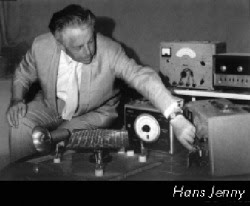Inflammation of conjunctiva causing redness of the eye is conjunctivitis. A thin, transparent mucous membrane covering the under surface of the eye lids is known as Conjunctiva. it extends from the eye lids to cover the anterior part of the eyeball up to the margin of the cornea.
Common symptoms of conjunctivitis are redness, itching,
stickiness, foreign body sensation, irritation, watering from the eyes and sometimes intolerance to light. Vision is generally normal but a slight blurring may occur if excess secretions form a film over the cornea. Conjunctivitis may begin in one eye but often spreads to involve both eyes.
Conjunctivitis is most commonly due to viral and sometimes bacterial infections. But it can also result from allergic reactions or from chemical irritants, air pollution, smoke, shampoos, dirt, swimming pool chlorine or noxious fumes. Rarely, underlying chronic inflammatory conditions can also cause a persistent conjunctivitis. The infectious form of conjunctivitis is very common in children and is highly contagious. Traditionally, home remedies have been successfully used for soothing inflamed eyes with uncomplicated symptoms, minor infections, or allergies. Treatment consists primarily of cleansing the eyes and preventing the condition from spreading.
Ayurveda Treatment : Daruharidra decoction is a popular traditional formulation mentioned in Ayurvedic texts for the management of uncomplicated conjunctivitis.
Daruharidra (Berberis aristata D.C.) : It is a shrub or small tree, distributed in the temperate and subtropical parts of Asia, Europe and America.
Composition : Consists of the decoction or solidified water extract of the stem or root of Daruharidra (Berberis aristata D.C.) termed as Rasanjana.
Chemical constituents : Alkaloids like berberine, berbamine, aromoline, karachine, palmitine, oxyacanthine and oxyberberine.
Therapeutic properties : Anti-inflammatory, antimicrobial, anti-diarrhoeal, anti-trachoma activity, and antipyretic.
Indications and uses : Conjunctivitis, trachoma and eye infection resulting from Chlamydia trachomatis, and chronic ophthalmic inflammation.
Dose and mode of administration
(1) Patient is made to lie down on the back with the neck slightly extended. Daruharidra is poured on the eye as thin stream with undine or with syringe without injection needle or canula. This procedure can be repeated twice or thrice in a day depending upon the severity of the symptoms.
(2) Generally the eye should be kept closed but in case of eye discharge, pulling the lids apart and irrigating the eye may be required.
(3) In cases where redness and burning sensation in the eye are prominent, irrigating fluid should be cold. When pain and discharge are prominent, then lukewarm decoction should be used.
(4) Daruharidra decoction can also be applied in the form of eye drops in conjunctivitis. For this purpose keep 2 ml of the filtered decoction mixed with equal quantity of pure honey in an eye dropper vial and use this mixture within 12 hours by instilling 1 to 2 drops in each affected eye 4 to 6 times a day at regular intervals.
Precaution and safety aspects
(1) Decoction and eye drops solution must be prepared fresh daily and kept in a sterile vessel.
(2) Infection can be easily transmitted by touching or rubbing your eyes, make an effort to avoid it.
(3) Protect the eyes from dirt, sunlight, other irritating substances and from repeated rubbing.
(4) Avoid the use of cosmetics while suffering from conjunctivitis.
(5) Remove contact lens, if it is worn.
(6) For cleansing and soothing the eyes dip a clean cloth in warm water, wring it out and place it on the eye till it becomes cool. Then apply another cloth in the same way.
(7) Avoid prolonged work under artificial light and excessive use of the eyes.
 Among urinary disorders there are simple to complex pathology. Here is some simple and effective home remedies which can be used in urinary difficulties. Burning and painful micturation is occure due to the infection in the urinary tract. Which is generally associated with the pain in the urinary tract, fever and weakness. With the related investigation and diagnosis a course of antibiotic is generally taken. Any one of the following easy herbal treatment also helps to relieve urinary symptoms significantly which is easy to prepare and use. These drugs have no side effects and boost up multisystems of our body :
Among urinary disorders there are simple to complex pathology. Here is some simple and effective home remedies which can be used in urinary difficulties. Burning and painful micturation is occure due to the infection in the urinary tract. Which is generally associated with the pain in the urinary tract, fever and weakness. With the related investigation and diagnosis a course of antibiotic is generally taken. Any one of the following easy herbal treatment also helps to relieve urinary symptoms significantly which is easy to prepare and use. These drugs have no side effects and boost up multisystems of our body :



























